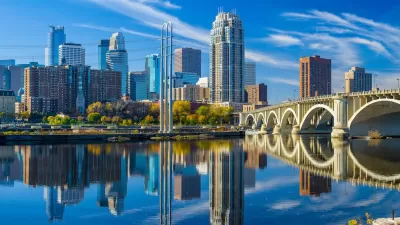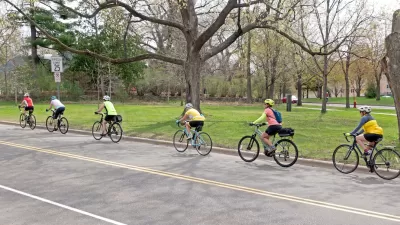Is MSP really "Greater"? A brief look at the Human Ecology of Minnesota's Twin Cities reveals tremendous upside along with numerous challenges
This past August I was honored to participate in Thriving Cities' own conference and workshop. Held over two days in Portland, Oregon, the seminar featured urban scholars and practitioners from all the across the country with topics ranging from the arts to economic development.
Since then, I have been thinking more and asking questions about how Thriving Cities' methodology and its Six Endowment Human Ecology framework speak to own my organization, Minnesota Compass—an initiative that seeks to inform local efforts to improve communities throughout our state by tracking social, economic, and demographic trends vital to quality of life. Specifically, I have been wondering how might we incorporate qualitative and even subjective assessment with data? And how might urban analysis include entire realms of experience, not currently tracked by Minnesota Compass, like religion and the arts?
Below is my preliminary effort to answer these questions, by applying Thriving Cities’ framework to my own backyard, the Minneapolis-Saint Paul metropolitan area, also known as "Greater MSP" or simply, the Twin Cities...
FULL STORY: A View from the Twin Cities

Maui's Vacation Rental Debate Turns Ugly
Verbal attacks, misinformation campaigns and fistfights plague a high-stakes debate to convert thousands of vacation rentals into long-term housing.

Planetizen Federal Action Tracker
A weekly monitor of how Trump’s orders and actions are impacting planners and planning in America.

In Urban Planning, AI Prompting Could be the New Design Thinking
Creativity has long been key to great urban design. What if we see AI as our new creative partner?

King County Supportive Housing Program Offers Hope for Unhoused Residents
The county is taking a ‘Housing First’ approach that prioritizes getting people into housing, then offering wraparound supportive services.

Researchers Use AI to Get Clearer Picture of US Housing
Analysts are using artificial intelligence to supercharge their research by allowing them to comb through data faster. Though these AI tools can be error prone, they save time and housing researchers are optimistic about the future.

Making Shared Micromobility More Inclusive
Cities and shared mobility system operators can do more to include people with disabilities in planning and operations, per a new report.
Urban Design for Planners 1: Software Tools
This six-course series explores essential urban design concepts using open source software and equips planners with the tools they need to participate fully in the urban design process.
Planning for Universal Design
Learn the tools for implementing Universal Design in planning regulations.
planning NEXT
Appalachian Highlands Housing Partners
Mpact (founded as Rail~Volution)
City of Camden Redevelopment Agency
City of Astoria
City of Portland
City of Laramie





























